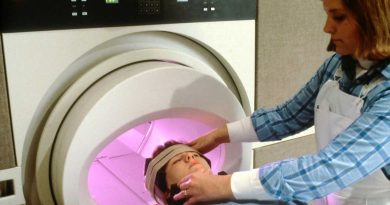Don’t Get Left Behind; Data Diagnosis Is Here
Medical technology, or med tech, is becoming increasingly prevalent across the healthcare continuum, affecting everything from healthcare systems to patient care and treatment to public health to improve health outcomes.

Dr Hansa Bhargava
Whether it’s an artificial intelligence (AI)–powered platform that helps diagnose genetic disorders in newborns, wearable tech and “sensored” tools that track and measure data and alert patients and their physicians to important health events, or digital therapeutics — evidence-based, US Food and Drug Administration (FDA)–approved treatments that physicians prescribe to treat a variety of chronic conditions — physicians have an increasing array of available medical technologies to offer insight-driven, cutting-edge care.
Though the technology is here to stay and can potentially provide better patient outcomes and affect the physician workflow, physicians may not be that comfortable with it yet.
In Medscape’s Drive Health Education Through Innovation report, 68% of physician respondents were not very familiar with mobile health technologies, 81% were not very familiar with software as a medical device, and 84% were not very familiar with prescription digital therapeutics. However, there seems to be an openness to them.
The American Medical Association Digital Healthcare 2022 study found that physicians who feel med tech tools are an advantage for patient care grew from 85% in 2016 to 93% in 2022. The increase was measured across all physicians irrespective of age or specialty. Unfortunately, adoption remains low, and only 3.8% of physicians have used med tech tools in practice, a meager 1.6% increase from 2016.
Doctors must be at the technological table — driving the conversation forward so they can be well informed of the latest developments, knowledgeable enough to prescribe and leverage med technology-based solutions for patient care, and provide valuable, necessary input to successfully integrate these tools into clinical care workflows. By creating provider champions of med tech tools, the technology will reach the patients who need it most.
AI in Healthcare
AI and machine learning (ML) are reverberating through many industry sectors, none riper for implementation than healthcare. When machines perform tasks typically associated with human intelligence, such as clinical decision support, many may balk and think we’ve entered the land of science fiction. However, AI is penetrating daily life, from anticipating the word we want to use in an email to offering music choices on the basis of our streaming profile. It’s clear why AI holds such promise in medicine.
Now, AI-based solutions have come to the physician’s office. First, AI is used in the everyday operational and administrative tasks needed to run a physician’s office, clinic, or hospital. It is used for automating repetitive tasks such as billing and prior authorization and boosting productivity with manual tasks such as electronic charting.
Additionally, AI can offer integrated tools such as quick PHQ and GAD7, self-reported major depressive disorder, and generalized anxiety disorder measures. Chatbot versions have been found to be superior to paper ones. And AI can use data from a patient’s electronic medical record (EMR), wearable sensors, and other data sources to predict future illness complications and disease trajectory.
AI is also being used to help with diagnosis by analyzing symptoms, and it suggests treatments and predicts risk/outcome. By using AI to analyze images, physicians can identify conditions more quickly. AI-powered software platforms assist physicians with diagnostic decision-making and can help eliminate missed opportunities for follow-up care, especially when demand outstrips capacity, as with COVID-19.
Several companies are pioneering efforts in the AI healthcare space. One, SpiroSmart, is optimizing AI for lung function spirometry in a cell phone application to improve the screening and diagnosis of various lung ailments in children and adults. After a patient’s exhalation is captured with a phone microphone, the app translates the acoustic sounds into a curve that represents lung volume and flow rate. The portable spirometry test allows the patient and provider to monitor pulmonary improvement or deterioration.
AI has uses in medication compliance as well. For example, one mobile tool uses a smart sensor to register inhaler usage in asthma patients. The sensor analyzes the inhalation history of a patient as related to weather conditions to recognize potential triggers for attacks.
In neonatal and pediatric intensive care units, AI is used to help physicians diagnose rare genetic disorders in newborns by using pattern recognition and real-time data so that babies’ conditions can be diagnosed and treatments started more quickly.
In the operating room, an AI-powered OR Advisor helps clinicians rapidly analyze real-world patient data from EMRs for surgical patients to see how pain medication adjustments affect pain management and, in turn, reduce opioid administration.
More than 160 AI-powered devices have been approved by the FDA. The framework is currently underway to provide direction, prevent problems, regulate algorithm protocols, weigh the benefits of intelligent technology against the harms, and allow for data privacy and address health inequality issues for patients who may not have reliable internet access.
Wearables
You may have already had patients tell you that their smartwatch informed them that they had a high heart rate, or their fitness tracker alerted them to Afib. Wearable technology can improve not only patient care but also the patient experience. And patients are already buying and wearing data tracking and smart fitness devices. Plus, with wearables, physicians can have the option to monitor their patients 24/7, which can provide valuable data outside the clinic setting and between appointments. Wearables can both collect symptom or behavioral data and predict health-related events.
While fitness and health buffs often use wearables to track steps, heart rate variability, and sleep quality, they aren’t just fads. Wearables capture and share patient data in many other settings as well.
In the hospital setting, Palarum’s PUP Smart Sock is an easy-to-use remote patient fall monitoring detection technology that allows the patient to move around freely and enhances rehabilitation therapy. Moreover, its geofencing technology alerts the three closest nurses that their patient is on the move so that they can attend to them quickly, reducing the risk of falls.
What’s more, the National Heart, Lung, and Blood Institute, in partnership with Apple and the American Heart Association, Johns Hopkins, Stanford, and the University of California, San Francisco, are assessing whether the Apple Watch can prevent strokes. The 7-year trial set to begin in spring 2023 will incorporate an app on the Apple Watch that will monitor Afib to help patients reduce their reliance on blood thinners. The study will also measure patient satisfaction and healthcare utilization.
Moreover, Google received FDA approval after a 2020 Fitbit heart study of over 455,000 wearers, which showed that the algorithm used in Fitbit could detect irregular heart rhythms and accurately identify undiagnosed Afib 98% of the time.
WHOOP, another wearable device that measures heart rate, heart rate variability, ambient temperature, and motion, teamed up with the Cleveland Clinic and Central Queensland University to see whether there’s a link between changes in respiratory rate and COVID-19 symptoms.
And the Los Angeles-based company NeuroSigma received FDA approval for the Monarch External Trigeminal Nerve Stimulation (eTNS) System, which can treat children aged 7 to 12 years who have attention-deficit/hyperactivity disorder (ADHD) and are not taking medication. The size of a smartphone, the device is connected to a disposable patch worn on the forehead. It generates a low-level, tingly-feeling electrical pulse and is delivered to the trigeminal nerve to send a signal to the brain region involved in ADHD. The child wears the patch during sleep.
These cutting-edge wearables can help patients in various ways, from noting an arrhythmia to helping predict an infection to collecting data to enhance prevention and care. When many clinicians feel overwhelmed, this “augmented” care could help patients and physicians by providing insight into symptoms outside the clinic setting.
Digital Therapeutics
Digital therapeutics (DTx), a newer category of medicine that delivers evidenced-based medical interventions to patients through clinically evaluated software to prevent, manage, or treat chronic medical conditions, are used independently or as an adjunct to other more traditional treatments, such as medication, therapy, and devices.
DTx products use advanced technology best practices in application and design. They are clinically evaluated for both usability and data security. Results are published in peer-reviewed journals, and the products are certified by regulatory bodies and cleared for risk, efficacy, and usage to empower patients and physicians with tools that can help treat a wide range of conditions.
Over the past decade, the array of conditions for DTx has expanded, particularly in behavioral health, and the FDA has approved over 40 DTx applications.
What are they? Digital therapeutics are prescription apps used for many conditions, including mental health problems and opioid use disorder recovery, and can even aid in diagnosing various diseases. Typically, physicians write patients a DTx, and the patient then downloads an app or software and follows the program instructions.
One DTx, WheezeScan, uses AI to alert patients and parents to the early stages of an asthma attack. It analyzes respiratory sounds to recognize changes that could signal an oncoming asthmatic episode. This type of warning feature can help kids and their caregivers recognize asthmatic triggers and symptoms of a crisis. Plus, using patient data and existing patterns can lead to more precise and personalized asthma prevention and treatment management for patients.
AppliedVR’s EaseVRx is a virtual reality–based digital therapeutic headset for chronic pain relief. Its preloaded software guides chronic low back pain sufferers through an at-home immersive 8-week program. In one study, device users reported a 43% reduction in pain intensity for chronic back pain, and the digital therapeutic can potentially treat many pain conditions.
Freespira is the only FDA-approved DTx to reduce or eliminate panic attacks and PTSD symptoms. The app, which trains users to normalize respiratory irregularities, consists of a small breathing sensor with a tablet that patients are instructed to use twice daily. The app provides real-time feedback on breathing, and users receive training and weekly check-ins with a coach.
Another DTx, reSET-O, is a prescription 12-week software application intended to increase the retention of patients with opioid use disorder in outpatient treatment by providing cognitive-behavioral therapy. Designed for patients aged 18 and older in an outpatient opioid use disorder treatment program, the DTx increases abstinence and retention in the treatment program.
EndeaverRx is an ADHD DTx designed for kids aged 8 to 12 who have been diagnosed with ADHD. The app uses an action video game to challenge a child’s attentional control while multitasking and is an adjunct to ADHD pharmacologic treatment.
These are a few of the many evidence-based, FDA-approved therapeutics that are software based. There are thousands of digital health solutions out there, and one organization has cataloged them for better awareness. Digital.Health allows you to browse and create your own digital health formulary and a prescription pad.
Further, a survey from Decimal.health found that over 87% of providers have indicated an interest in prescribing DTx for their patients; however, addressing integration into standard clinical workflows and building in features to drive patient engagement is needed to realize their full use potential.
Heading Into the Future With This Technology
These technologic advances in monitoring and treating patients are available now. Through data availability on a broad scale through various sources, we can diagnose diseases earlier and help predict outcomes for more efficient and precise care.
In many cases, these technologies could potentially solve health inequities by incorporating diverse data and allowing patients in “healthcare deserts” to access care. Still, it is essential to keep equity front and center for the benefit of all. Additionally, we must remain vigilant about patient privacy, ensuring that software-based applications and cloud-based data are protected.
It is truly an exciting time to use these new technical capabilities to make a difference in patients’ lives by making care more accessible and care delivery more effective and efficient.
Hansa Bhargava, MD, is chief medical officer at Medscape Education; Brandon S. Aylward, PhD, is the director of digital health at RTI International; Daniel Kraft, MD, is the founder and chair of Exponential Medicine; Jennifer Nelson is features editor, reports, at Medscape.
For more news, follow Medscape on Facebook, Twitter, Instagram, and YouTube.
Source: Read Full Article



